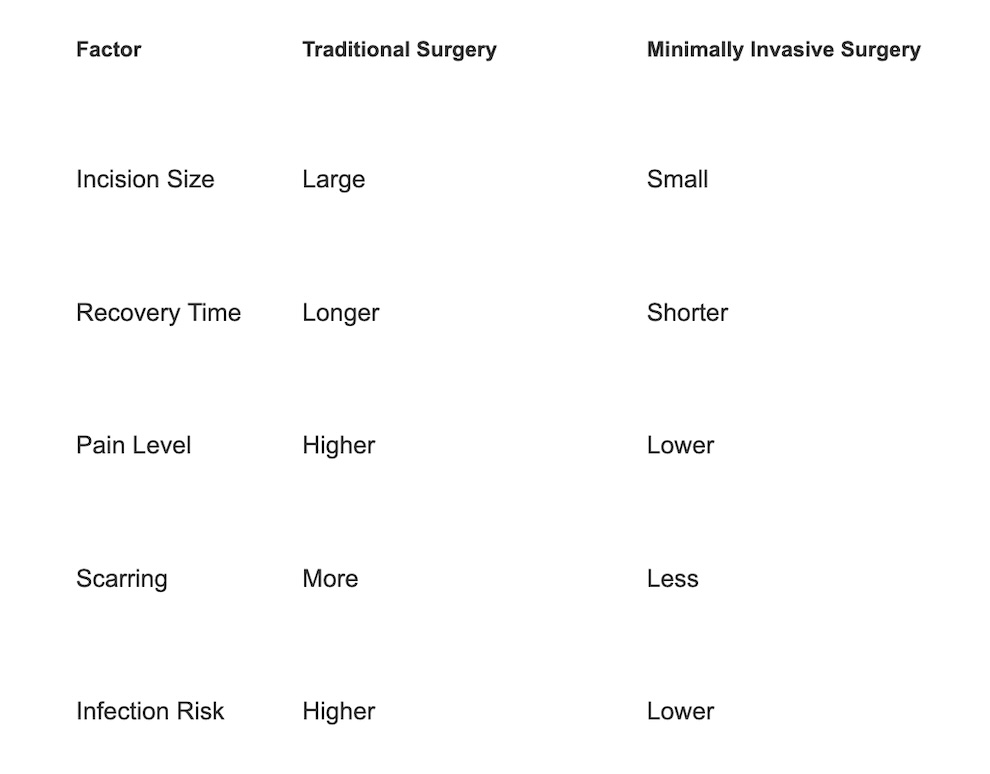What Are The Different Surgery Types? A Look At Their Risks And Benefits
Surgery has evolved significantly over the years, offering various techniques that minimize recovery time and enhance patient comfort. At the forefront of these advancements is the Laparoscopic and Endoscopic Surgery Institute, P.C. This blog will explore different types of minimally invasive surgeries, their benefits, and potential risks. These techniques often result in less pain, shorter hospital stays, and quicker recovery.
By using small incisions, surgeons can perform complex procedures with precision. However, every surgical method carries its own set of risks. Potential complications can include infection, bleeding, or adverse reactions to anesthesia. Understanding these factors is crucial in making informed decisions about your health care. As we delve into each type of surgery, we aim to provide clear insights into what these procedures entail. Knowledge empowers us to engage in meaningful discussions with health providers and make choices that best suit our needs.
Laparoscopic & Endoscopic Surgery Institute, PC
Michael Williams, MD FACS & Brendon Curtis, MD
5755 North Point Parkway
Suite 223
Alpharetta, GA 30022
Phone: (770) 282-1322
Types of Minimally Invasive Surgeries
Laparoscopic surgery and endoscopic surgery are the two primary types of minimally invasive procedures. They both use small tools and cameras to operate inside the body without large incisions.
-Laparoscopic Surgery: This involves inserting a laparoscope through a small incision in the abdomen. It is commonly used for gallbladder removal, hernia repair, and appendectomies.
-Endoscopic Surgery: This procedure uses an endoscope, which is a flexible tube with a light and camera, inserted through natural openings like the mouth. It can be used for gastrointestinal procedures and sinus surgeries.
Both types of surgery aim to reduce trauma to the body, resulting in shorter recovery times compared to traditional open surgery.
Benefits of Minimally Invasive Surgeries
Minimally invasive surgeries offer several advantages over traditional surgeries. Here are three key benefits:
-Less Pain: Smaller incisions mean less pain during recovery.
-Faster Recovery: Patients often resume normal activities sooner.
-Reduced Scarring: Smaller cuts result in less visible scars.
These benefits can significantly improve the overall experience and outcomes for patients undergoing surgery. According to the NI Direct Government Services, patients often report higher satisfaction with minimally invasive procedures due to these factors.
Risks and Considerations
Despite the many benefits, it is important to be aware of the potential risks involved with minimally invasive surgeries. Some of these risks include:
- Infection: Any surgical procedure carries a risk of infection, even with small incisions.
- Bleeding: There may be risks of bleeding, especially if blood vessels are inadvertently damaged during surgery.
- Anesthesia Reactions: Adverse reactions to anesthesia can occur, though they are rare.
Before proceeding with surgery, it is essential to discuss these risks with a healthcare provider and weigh them against the benefits. The NHS provides detailed information on what to expect before, during, and after surgery, making it a useful resource for patients preparing for a procedure.
Comparison Table: Traditional vs. Minimally Invasive Surgery

Takeaways
Minimally invasive surgeries such as laparoscopic and endoscopic methods are revolutionizing the surgical field. They offer numerous benefits over traditional procedures, making them a preferred choice for many patients and surgeons. However, it is crucial to understand the potential risks and discuss them with a healthcare provider. By staying informed and engaged in the decision-making process, patients can make choices that align with their health goals and recovery expectations. As the field of surgery continues to advance, the options for effective and patient-friendly treatments will only expand, providing hope for even better outcomes in the future.